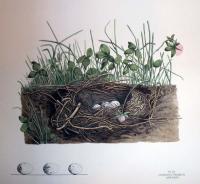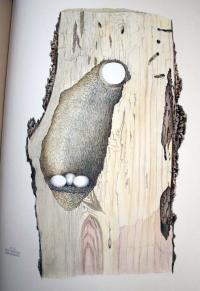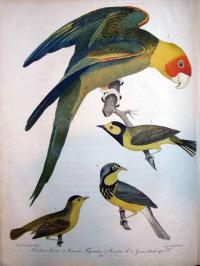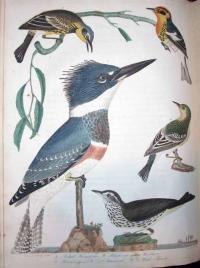“Nest and Eggs” is a beautiful color-plate book that began in 1877 as the project of Genevieve Jones and Eliza Shulze, two young women in Circleville, Ohio. Jones’ father offered to finance the publication and to collect the birds’ nests for the girls to illustrate. None of them had any previous experience but it was their hope to produce a scientific work in twenty parts, illustrated with hand-colored lithographs, which would sell for $5.00/part.
According to the research of Ernest Wessen, published in The Papers of the Bibliographical Society of America 47, no. 3 (1953), some of the production and most of the credit for the publication was taken over by Genevieve’s younger brother, Howard. Even their mother, Virginia, who help out after 1879, received more credit than her daughter.
Regardless, the production of the book was exceptional. Adolph Krebs, a professional lithographer, shuttled 65 pound stones back and forth between Circleville and his studio in Cincinnati. Josephine Klippart, a professional colorist, was paid $3/print. Robert Clarke, a Cincinnati publisher, printed the text and wrappers.
The first part was released in July of 1879 and the final part in December of 1886. In the end, the biggest loser might have been Dr. Jones, who put up $13,181 for the edition of 90 copies (23 parts, 60 plates). Records indicate sales over ten years returning just $2,000. The Smithsonian has digitized all the plates at www.sil.si.edu/ondisplay/nestsandeggs/
At the other end of the spectrum, is Alexander Wilson’s color-plate book American Ornithology, published from 1808 to 1825. Under the instructions of his neighbor, the naturalist William Bartram, Wilson began painting birds of the area. Engraver Alexander Lawson was employed to translate the designs to engravings. Either dissatisfaction or lack of funds led Wilson to fire the colorists and he did most of the hand-coloring himself.
In a recent exhibition at the Library Company of Philadelphia, curators presented the discovery that Wilson also used some color printing to supplement the hand work. If this is the case, Wilson’s Ornithology is the first American book with plates printed in more than one color.
To see more on Wilson and his coloring, go to www.librarycompany.org/
color/section4.htm




The Smithsonian site on the Jones family nest/eggs of Ohio series.
Um, what does "GAX 2008- in process." mean??